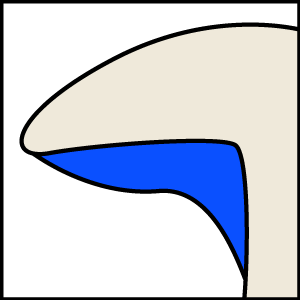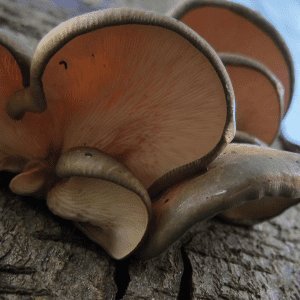Olive Oysterling / Spring / Summer / Autumn / Not Edible
Olive Oysterling Identification guide. Everything you need to safely identify this mushroom from it’s toxic lookalikes.
Common Names:
Olive like oysterling
Botanical Name:
Sarcomyxa Serotina
Meaning of Botanical Name:
Sarcomyxa meaning slimy flesh, serotina meaning late, referring to it growing late in the season often fruiting after the first frosts
Scientific Classification:
Kingdom: Fungi,
Division: Basidiomycota,
Class: Agaricomycetes,
Order: Agaricales,
Family: Marasmiaceae
Genus: Sarcomyxa
Known Hazards:
Contains carcinogens which could lead to cancerous growth.
Could be confused with:
Species of oyster such as the grey oyster (edible), Angel wings is the only one to be wary of as its reported as being toxic – it is porcelain white.
Food Plant of:
Insect larvae
Range and Distribution:
Found in Britain and Ireland, as well parts of North America
Habitat:
Occurs on dead trees and logs favouring deciduous trees but occasionally found on conifer trees
Physical Characteristics of the Olive Oysterling:
Cap
Buff brown with olive green tinge caps which have a wavy edge, they’re very slimy when wet.
Stem
It has a short off-centre stem or nub
Gills
The gills of the Olive Oysterling are yellowish turning brown with age and are decurrent, running from the cap edge all the way down the nub.

Spores
They have white sausage-shaped spores. They often grow singularly or in small clusters.
Edible Use:
Due to the carcinogens, we do not advise eating this mushroom.
Herbal:
There is evidence that extracts from this mushroom can help prevent fatty liver disease.






